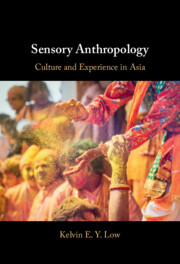Sensory Anthropology
From constructions of rasa (taste) in pre-colonial India and Indonesia, children and sensory discipline within the monastic orders of the Edo period of Japan, to sound expressives among the Semai in Peninsular Malaysia, the sensory soteriology of Tibetan Buddhism, and sensory warscapes of WWII, this book analyses how sensory cultures in Asia frame social order and disorder. Illustrated with a wide range of fascinating examples, it explores key anthropological themes, such as culture and language, food and foodways, morality, transnationalism and violence, and provides granular analyses on sensory relations, sensory pairings, and intersensoriality. By offering rich ethnographic perspectives on inter- and intra-regional sense relations, the book engages with a variety of sensory models, and moves beyond narrower sensory regimes bounded by group, nation or temporality. A pioneering exploration of the senses in and out of Asia, it is essential reading for academic researchers and students in social and cultural anthropology.
- Engages with a variety of sensory models, and moves beyond narrower sensory regimes bounded by group, nation or temporality
- Chapters are each organized according to core anthropological themes
- Balances ethnographic depth with analytical discussion across cases in and of Asia
Product details
March 2023Hardback
9781009240833
232 pages
235 × 158 × 18 mm
0.47kg
Available
Table of Contents
- Acknowledgements
- Introduction – How The Senses are Good to Think With
- Part I. Perspectives and Precepts:
- 1. Sensory models and modalities
- 2. Sensory moral economies: Part II. Responses and Restitutions:
- 3. Sensory transnationalism and interfaces
- 4. Gastropolitical encounters
- 5. Extreme sensescapes
- Conclusion – Thinking Through the Senses
- Notes
- Bibliography
- Index.








